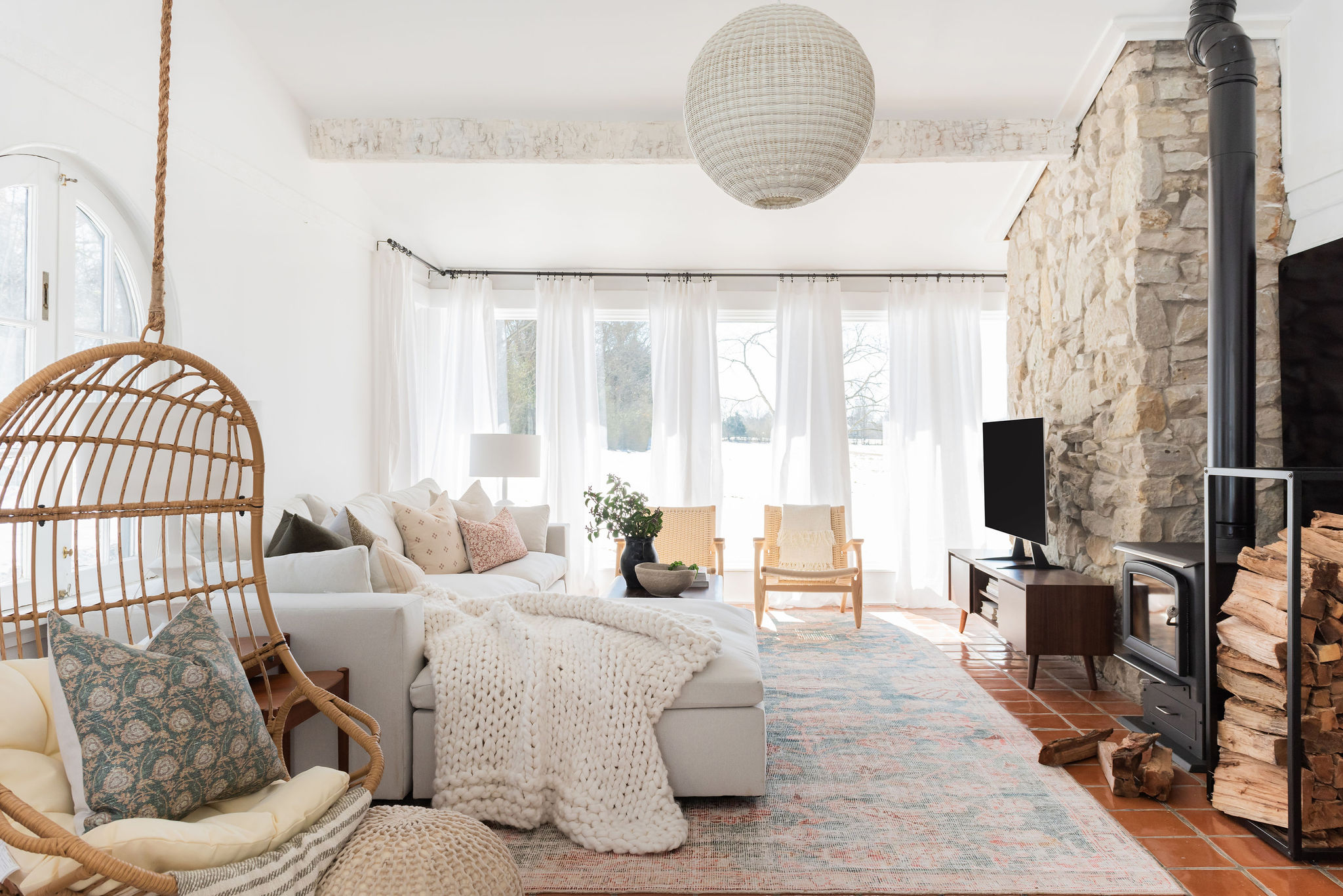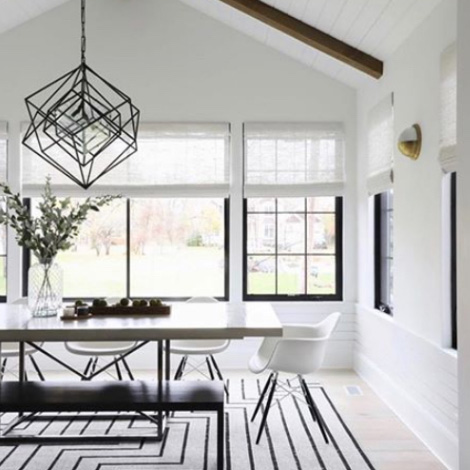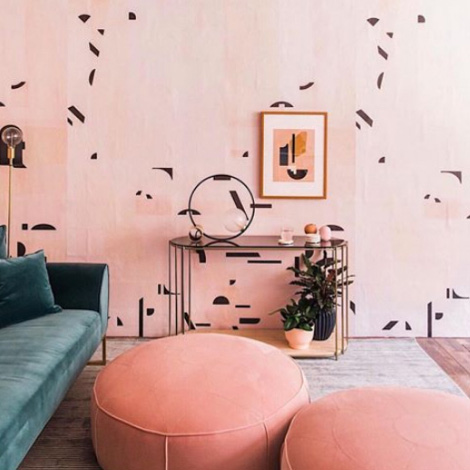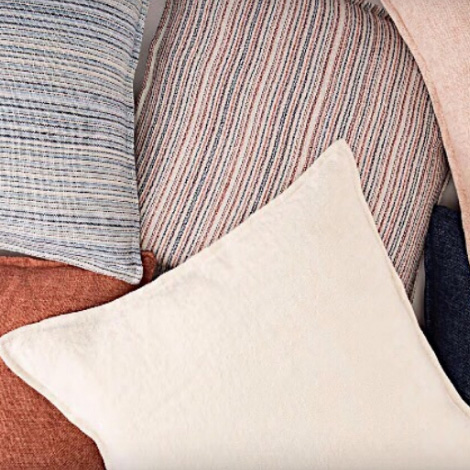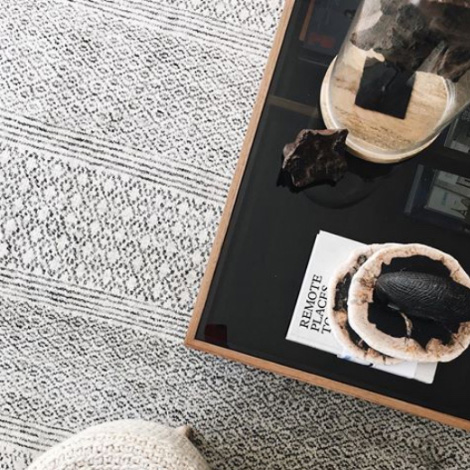As our time at home has increased over the past few years, so has the desire for a more personalized space filled with pieces that are perfectly tailored to meet our needs. Here, Jaipur Living turns to interior designers Lauren DeBello and Andrea West for their advice on guiding clients through the rug customization process—from when bespoke designs are necessary to the price tag attached.
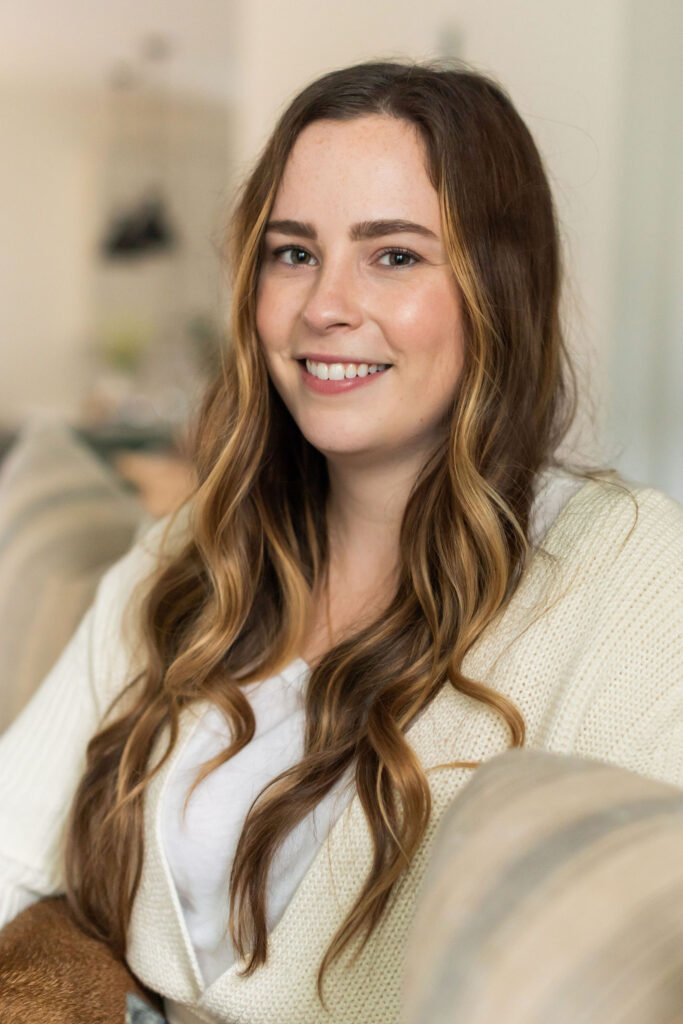
Interior designer Lauren DeBello. Photo by Allison Elefante Photo
Lauren DeBello, Lauren DeBello Interiors
Lauren DeBello is the owner and principal designer of her full-service Nashville firm that specializes in organic, livable spaces. She is passionate about bringing her clients’ dreams to life, mixing old and new, and blending textures to produce interiors with a cool West Coast vibe.
What does custom design mean?
Custom design consists of any creative personalized solution to address a concern specific to your home.
Why is there such a demand for custom design today?
I think consumers are craving something more unique and personalized in their homes. The last two years were very hard on all of us, and I think being stuck at home for some period of time made us all a little stir crazy. That really caused us all to take a look at how we utilize the spaces in our homes and what would work best for our lifestyles. More often than not, that solution requires some sort of customization.
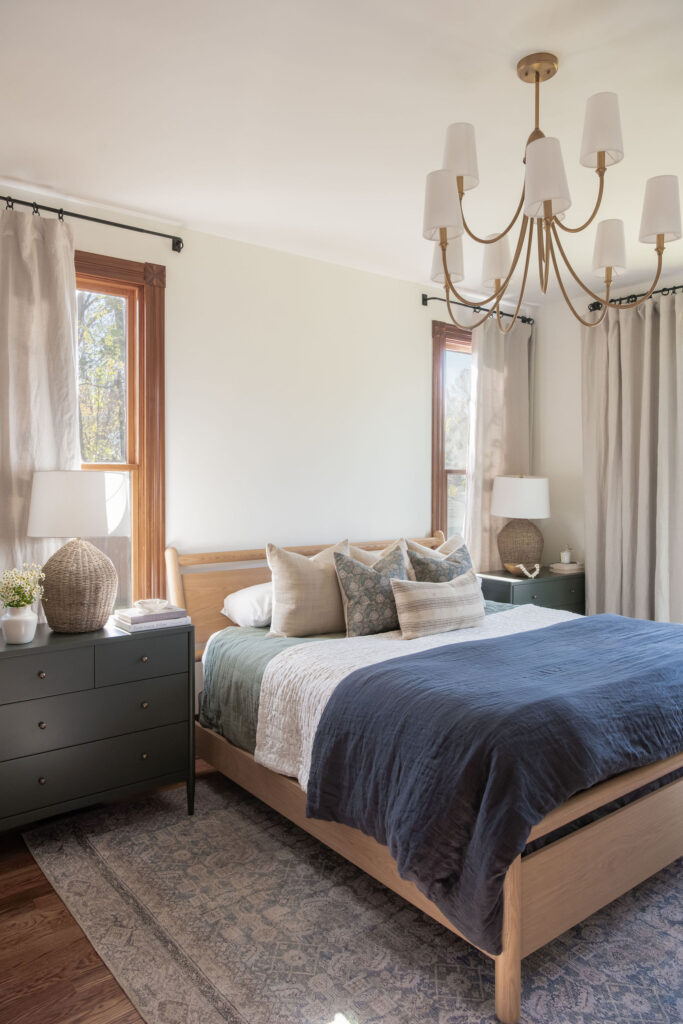
The Medea rug in a bedroom designed by Lauren DeBello. Photo by Allison Elefante Photo
What are some of the advantages of customization?
When you create custom furniture and decor, you are able to utilize a space to its fullest potential. Sometimes the scale of a room calls for a larger piece of furniture that may not be readily available, and in creating a piece that works for the room, you’ve made the room more functional and beautiful. The options are endless when you design your own custom pieces.
How do you know when a custom rug or piece of furniture is necessary?
There are a lot of different reasons to create custom pieces, but in most cases, there is some aspect of the room that creates a challenge when sourcing furniture or accessories. For example, an extremely large living room might require a custom sized rug to anchor the room, or an empty space beside a fireplace might call for custom built-in shelving. In other cases, there may be a goal or use for the space that requires a custom solution. For example, a client might love to host large dinner parties and prefers a huge dining table to be able to seat all of her guests in one space. Dining tables that seat many guests aren’t always readily available, so in that case, I’d work with a woodworker to create something custom that works within the scale of the room.
See also: Business Of Design: Interior Designers & The Storefront
Before you begin looking for custom pieces, what factors should first be taken into consideration? How do you pinpoint the best option to meet a client’s needs?
You should always consider the size/scale, the functionality and the form. The piece should work well for your lifestyle, but also be aesthetically pleasing. Make sure the size is relative to other elements in the space.
What is the designer’s role throughout the custom process?
The designer’s role is to assess the needs of the client and to design something that is both functional and beautiful. The designer will work with a workroom or tradesperson to both design the custom piece and select materials. The end goal of the custom solution is to make the client’s life more comfortable.
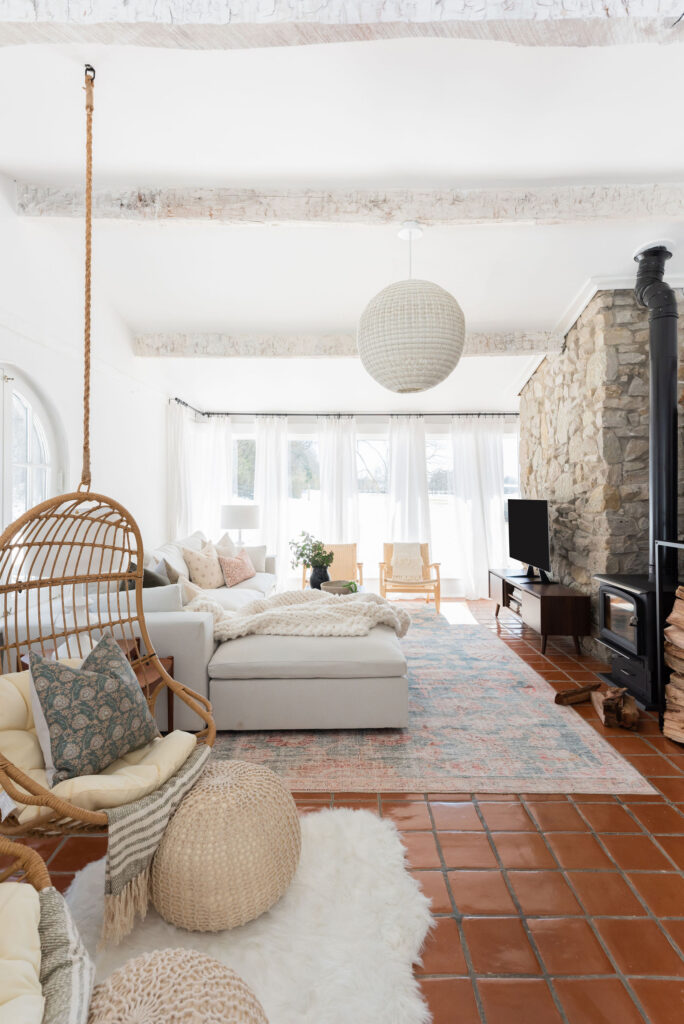
A living room from DeBello showcases the Boheme rug. Photo by Allison Elefante Photo
What are your biggest don’ts when tackling a custom design project?
1. Don’t be impulsive—make sure you have requested samples, you have reviewed drawings and have paid attention to all the details.
2. Don’t be trendy—typically custom pieces come at a higher price point, so stick to the timeless classics to ensure you won’t grow tired of your custom piece.
3. Don’t skimp—this is your opportunity to create exactly what you want.
How do you weigh the benefits of custom design against the price tag?
Ultimately, the need for a custom solution and the ease it brings to your lifestyle will outweigh the price tag. If you select high quality, durable materials in classic silhouettes and colors, you will be able to enjoy your custom design for years to come.
See also: 4 Can’t-Ignore Reasons To Invest In Home Decor
What is your best piece of advice when it comes to customizing a rug?
As with sourcing any rug, pay attention to the materials you are selecting. In high-traffic areas, make sure to select durable materials that will not matt down over time. If you have pets and kids, select performance materials that are easy to clean and maintain. Always remember to consider the way in which you plan to use a room before selecting the materials inside the room.
Which Jaipur Living rugs would you love to customize for a space?
I’d love to try some of the more solid, neutral and textural rugs like Aldea, Britta, Strada and Saga.
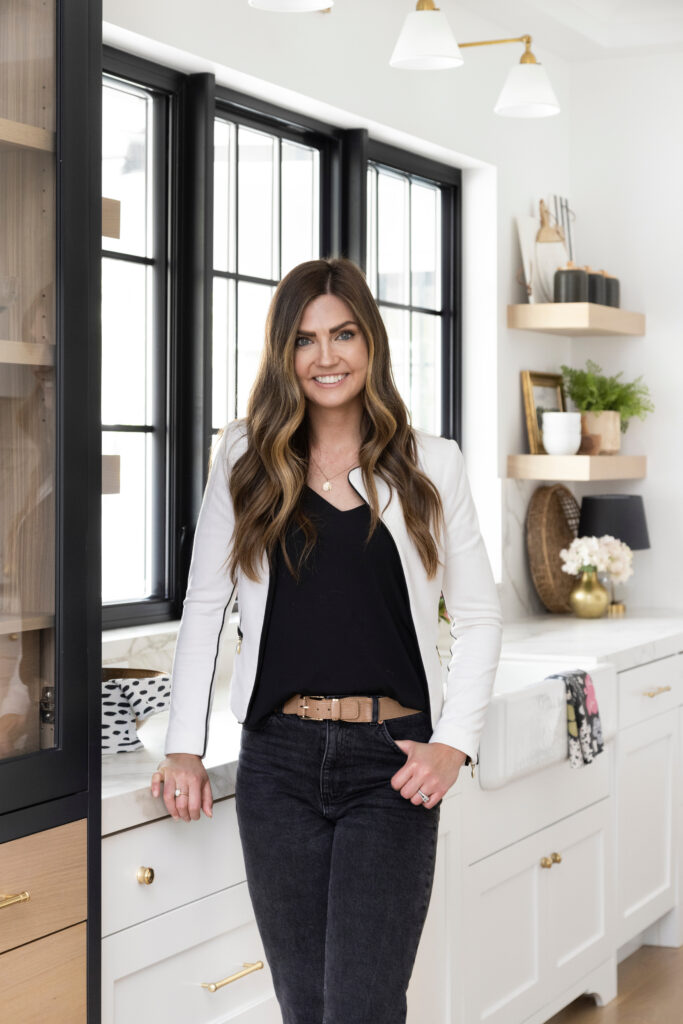
Interior designer Andrea West. Photo by Meagan Larsen
Andrea West, Andrea West Design
Utah-based Andrea West is the owner and principal designer of her full-service residential interior design firm, which she established alongside her husband, Aaron. Best known for her rustic contemporary style, West loves infusing bold colors and fun patterns to create spaces as unique as her clients.
What does custom design mean?
Custom design is anything that is made from an original design to fit a specific idea or vision.
Why is there such a demand for custom design today?
We are seeing a lot of clients who want something one of a kind, and as we get into more detailed designs, going custom allows us to have more flexibility in what direction we can pull the design.

Jaipur Living‘s Aldea collection is handwoven from 100% wool.
What are some of the advantages of customization?
Going custom allows us to have a lot more creative licensing when it comes to putting together an original design. It also has an advantage when you need a specific size to fit a space.
How do you know when a custom rug or piece of furniture is necessary?
We know we need to go custom when we are dealing with oversize rooms or a unique shaped space. We also love going custom when our client has a specific vision that we want to use the rug as inspiration or a statement piece.
See also: 4 Ways To Elevate Interiors With Unconventional Materials
Before you begin looking for custom pieces, what factors should first be taken into consideration? How do you pinpoint the best option to meet a client’s needs?
We always consider the budget of the overall project, and also the lifestyle of the client. Before we begin looking for custom pieces we always determine the design direction and decide what we want to be the focal point and jumping-off point in the overall design.
What is the designer’s role throughout the custom process?
We are typically the ones that recommend when it is appropriate to go custom, and then help guide the direction of the style and color in the piece.
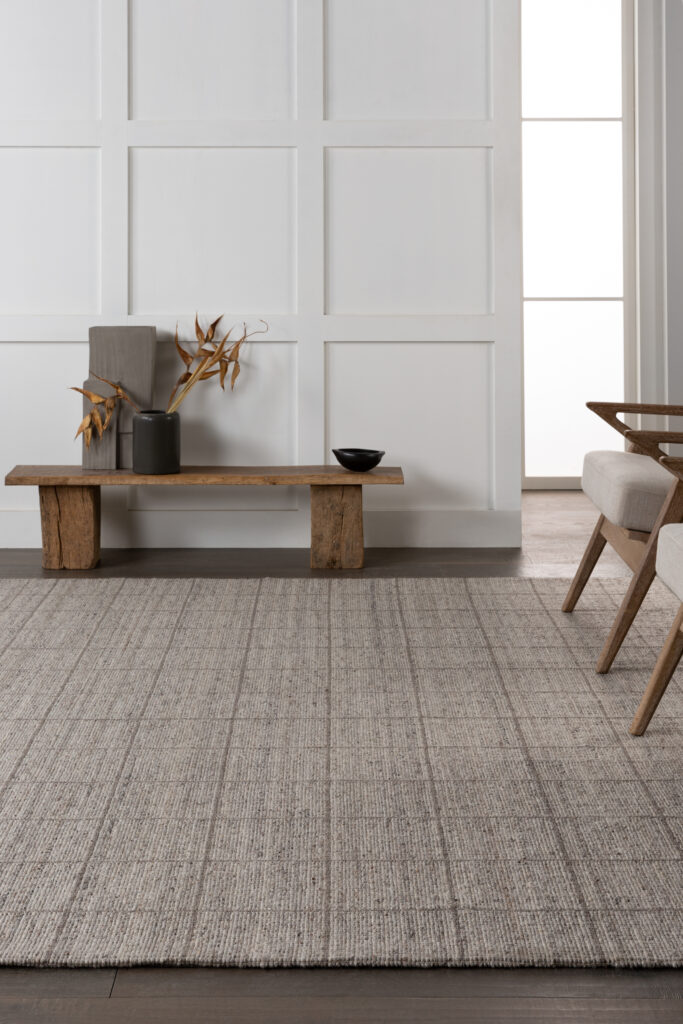
Barclay Butera‘s Oxford collection for Jaipur Living
What are your biggest don’ts when tackling a custom design project?
Our biggest don’t is doing a custom project piece by piece; instead, factor the elements in the design as an entire space. Each piece influences another within the space or project and needs to be taken into consideration, especially when doing custom items that are typically higher price points.
How do you weigh the benefits of custom design against the price tag?
The benefits of doing custom design are weighed against the price tag when we are designing a statement space that supports incorporating a piece that the client absolutely loves and tells a story within the design. We also love when we get requests for one-of-a kind pieces that you can’t find anywhere else, which makes the design super unique and beautiful.
See also: 5 Candid Minutes With Barclay Butera
What is your best piece of advice when it comes to customizing a rug?
Our advice is to plan out all elements of the design and that will help determine which colors to use within a rug, and if the movement in the rug should be more busy or fluid. We also recommend determining which element in the space is the focal point, which for us is usually the rug, and building the design of the room from there.
Which Jaipur Living rugs would you love to customize for a space?
We love all the transitional rugs from Jaipur Living as they fit a wide variety of design styles, and love all the ones from the Designer Edit lines and the Barclay Butera line.
Next story


